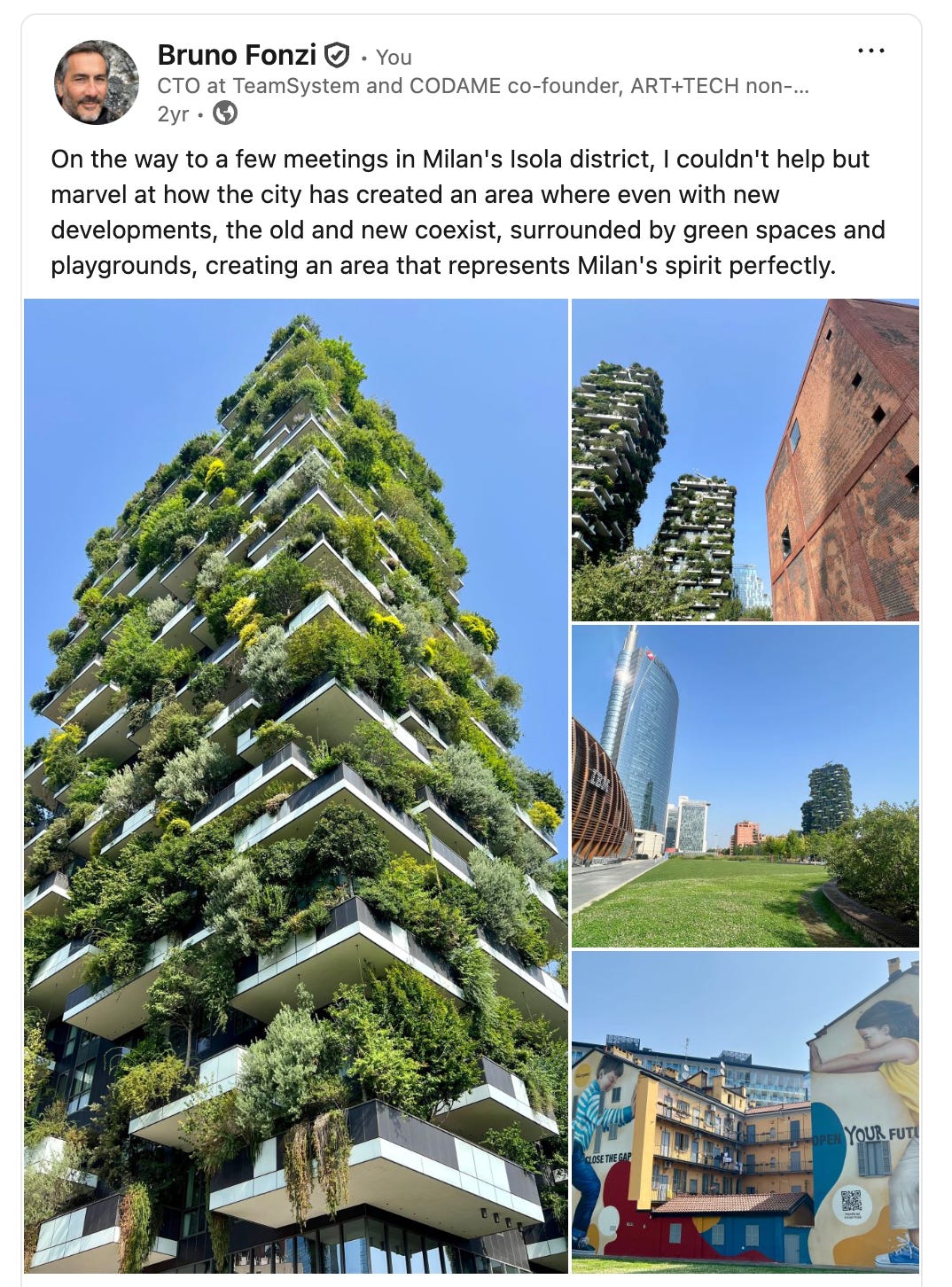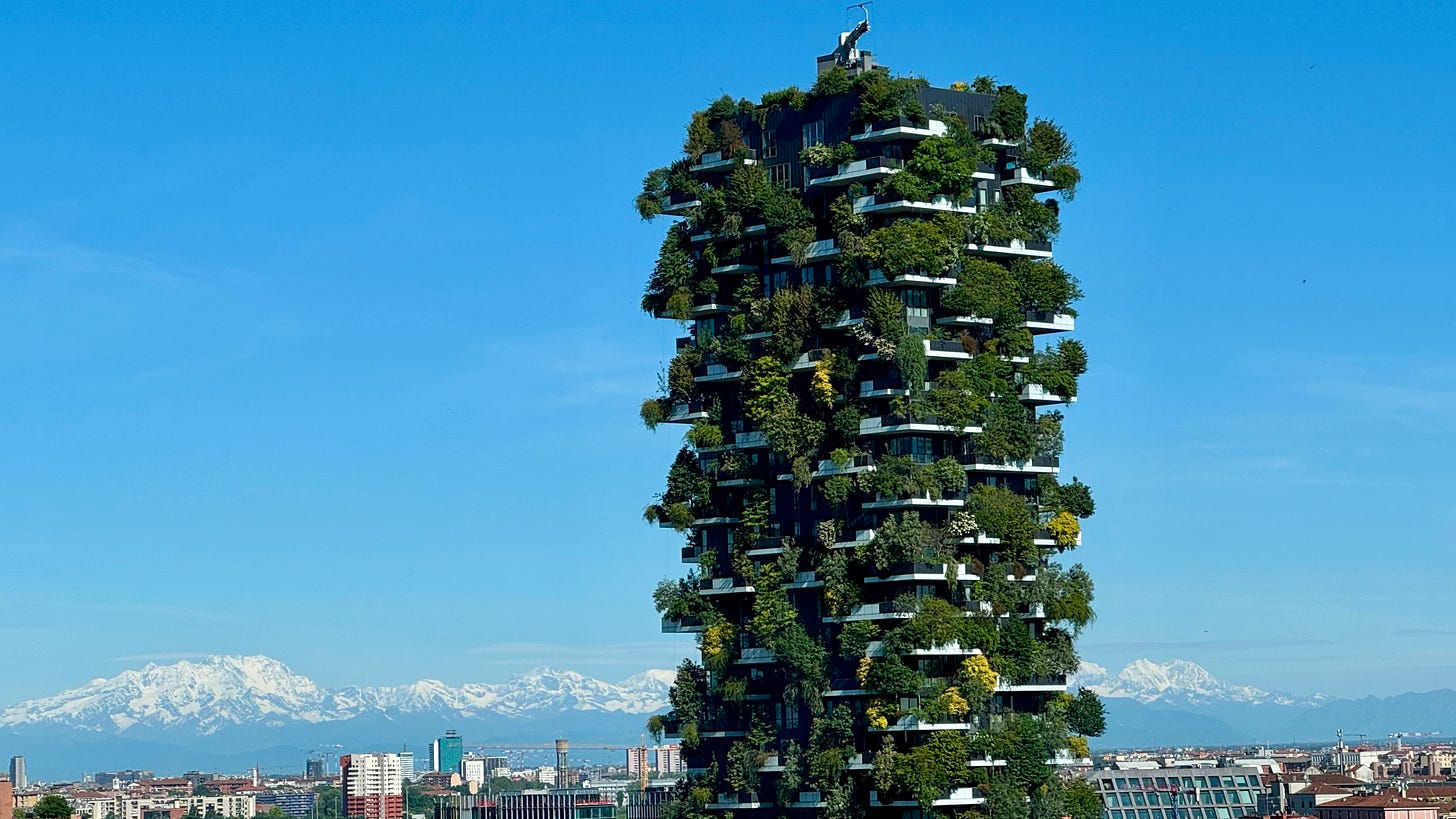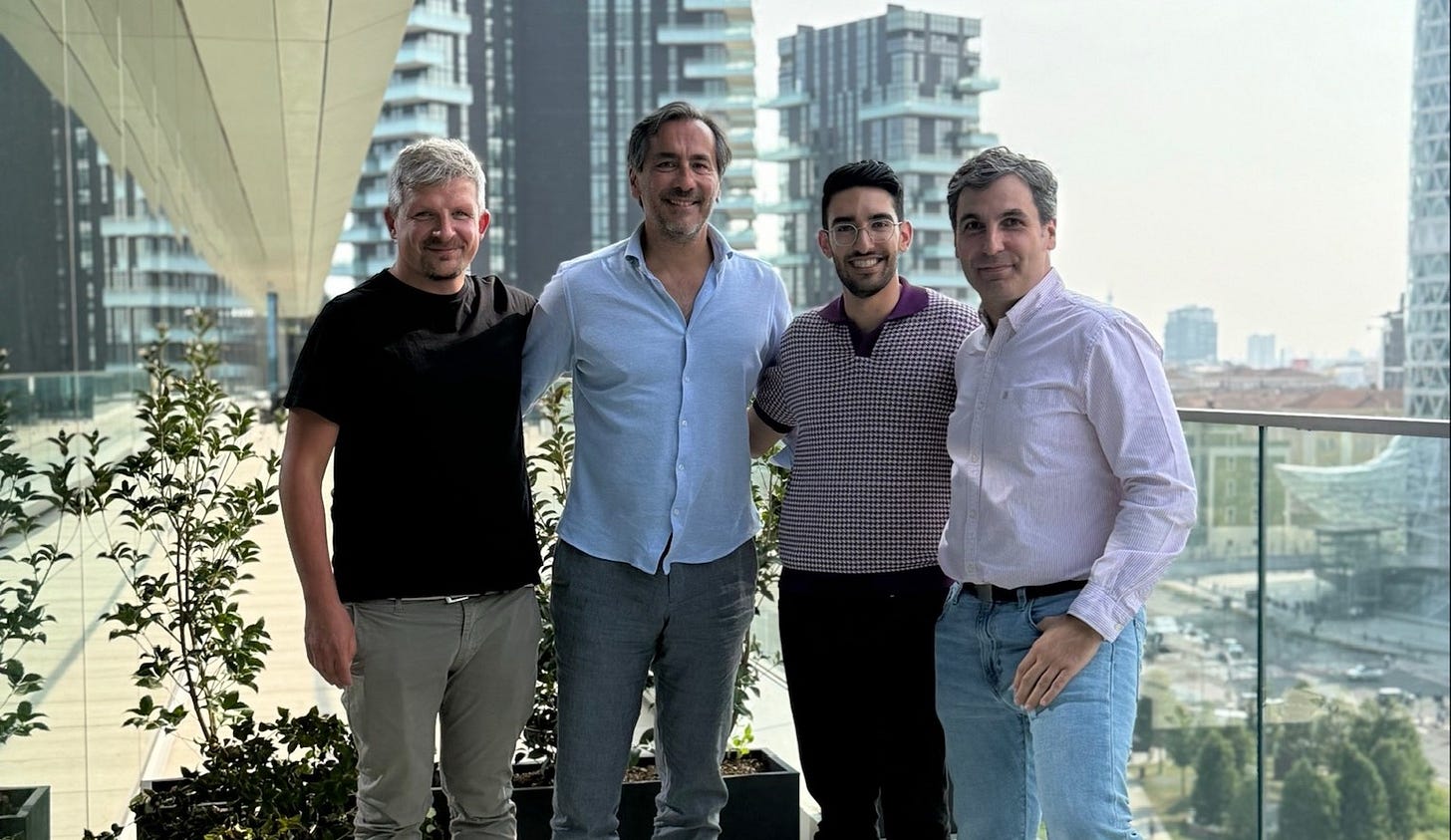Full Circle in Milan
A journey from a first impression to a daily view — where art, architecture, and humanity meet.
The first time I walked through Milan’s Isola district, I was on my way to a few meetings and couldn’t help but marvel at how the city had created a space where the old and the new coexist so naturally.
Modern architecture like Bosco Verticale from Stefano Boeri rises beside traditional facades, while green spaces and playgrounds stitch the neighborhood together. It felt — and still feels — like a vivid expression of Milan’s spirit: bold, layered, and open to reinvention.
That impression stayed with me.
Today, I work in a space overlooking Biblioteca degli Alberi Milano (BAM) here at Teamsystem. What was once a rail yard is now one of Europe’s most visionary urban parks. But this time, I’m not just passing through — I’m part of the rhythm of the place.
BAM is more than a park. It represents a vision of urban development that brings together design, ecology, and community. Its story is worth reading 🔗 https://bam.milano.it/en/la-storia/
Art played a pivotal role in this transformation. During the 2015 Expo, the Riccardo Catella Foundation and the Fondazione Nicola Trussardi commissioned Wheatfield — a 5-hectare wheat field planted by American artist Agnes Denes. The act was poetic and provocative: a golden field growing in the shadow of cranes and concrete. It invited the city to pause, reflect, and imagine new possibilities. A reminder that art can not only inspire — but also shape the future of cities.
That vision is still alive today.
Most recently, BAM hosted Circus – Il Festival delle Meraviglie al Parco, a three-day celebration of contemporary circus, performance, and aerial art that transformed the park into a dreamlike realm. One of the highlights was SYLPHES – Aerial Poetry in Motion, a breathtaking ballet in the sky that evoked the elegance of synchronized movement and the emotional richness of classical dance. The air itself became a stage — an ephemeral and moving tribute to human fragility and grace.
🔗 See more from that magical moment
Experiences like these reaffirm the role of public space not just as infrastructure, but as canvas — open to all, alive with meaning.
But moments like Wheatfield or Sylphes only reach their full potential when followed by sustained programming, accessible participation, and long-term care. Urban transformation isn’t a one-time installation — it’s a continuous cultural commitment.
Full Circle to ART+TECH
This connection between art, technology, and public experience is also at the heart of CODAME ART+TECH — the nonprofit I founded in San Francisco and recently brought to Milan.
At CODAME, we explore the intersection of creativity and emerging technology not just to push boundaries, but to connect with humans — always placing people at the center of the experience, the inspiration, and the creative process.
We believe that creativity is a powerful tool for building not just products, but perspectives. For sparking dialogue. For imagining futures that are inclusive, expressive, and alive.
Just as cities invest in public parks, museums, or libraries, we believe technology should be treated as cultural infrastructure — designed intentionally, shaped ethically, and rooted in human experience.
Bringing CODAME to Milan has also meant listening first. While the energy of creative experimentation is universal, each city has its own rhythm, constraints, and cultural DNA. Here in Milan, I’ve encountered a deep respect for tradition, balanced with a strong appetite for innovation. The tension between the two is fertile ground for meaningful, human-centered experiences.
The Other Side of Innovation
As with many stories of urban renewal, there are complexities. The transformation of Isola has brought innovation and beauty — but also rising costs, shifting demographics, and the risk of losing the unique character shaped by long-standing communities.
But this doesn’t have to be the cost of progress.
What gives me hope — and what sets Milan apart — is how thoughtfully the city and its community have approached this evolution. From design and architecture to programming, events, and preservation, there’s a clear effort to balance change with care.
The city’s commitment to inclusivity is visible not just in cultural programming like Wheatfield or SYLPHES, but also in everyday details: open-access green spaces, diverse public events, and the playgrounds at BAM where children of all backgrounds play together, while families and grandparents gather, relax, and reconnect.
These spaces are not exclusive. They’re designed to be lived in — by everyone.
BAM, and the broader Porta Nuova district, reflect a vision of urban life where innovation doesn’t just serve aesthetics or capital, but community. Milan is far from perfect — but the intention to include, to preserve identity while embracing change, is there. And it shows.
As we continue building, innovating, and creating, we must ask: Who is this for? And how can we design futures where more people belong?
When art and technology are guided by these questions, they become more than tools — they become bridges.
If you’re working at the intersection of public space, creative technology, and community — or asking these same questions — I’d love to connect.




https://www.instagram.com/tiat.place/